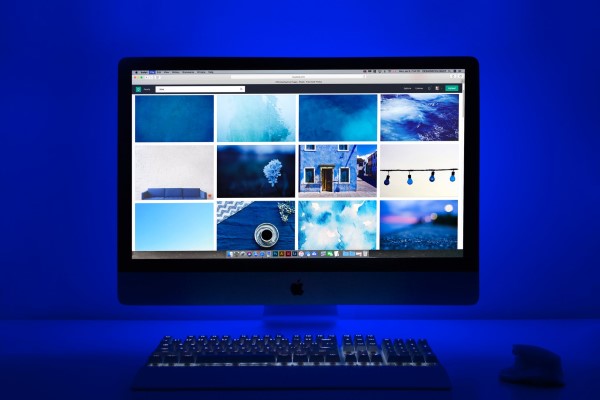It is often said that a picture can speak more than a thousand words. In all kinds of research papers, pictures are essential in adding to the richness of the literature and analysis because of the valuable insight they can offer. For example, pictures of measured data from statistical applications are very important additions to the “Data presentation and analysis” chapter or section of any research paper.
This is because they help to complement verbal discussions or analysis by offering a visual presentation of the statistical technique used to measure the variables of interest. However, where the researcher is not the originator of such pictures, it is very important to cite the source of the picture according to the prescribed format. In the case of statistical applications mentioned above, for example, be sure to disclose which application generated the picture or printout as well as the version of such an application (e.g., SPSS version 27).
What is a research paper?
A research paper is a form of academic writing which involves formally investigating a field of knowledge or topic of interest in order to add to the existing stock of knowledge in that field and/or solve a particular problem. Educational research is formal because it is not based on the subjective discretions of the researcher but on an accepted and objective standard such as the scientific method of inquiry. Research papers can be of different types. These include term papers, seminar presentations, undergraduate projects, post-graduate thesis or dissertations, conference/workshop papers, and journal entries, among others.
Though these highlighted papers and others can be structured in diverse ways, conducting research in this context basically requires that the researcher identifies a problem or area of interest; formulates research questions and/or hypothesis; reviews the existing literature in the field; collects, measures and analyzes relevant data; discusses the findings; makes conclusions and recommendations based on the findings and then suggests possible directions for future research.
Some things to consider before including pictures in a research paper
As noted above, pictures can complement words to make a research paper richer in terms of providing more insight. However, the researcher must ensure that such pictures are optimally included to generate the desired effects. To this end, some of the tips below can help.
Ensure the picture adds value to your research paper
Pictures may be a necessary aspect of some research papers but this does not imply that they should not be selected meticulously and meritoriously. The researcher must critically evaluate all pictures he or she intends to include in their paper and select only the most relevant, i.e., those that will help illuminate verbal discussions/analysis and consequently deepen the understanding of readers.
Proper labeling and citation
Research papers are formal documents with rules on how each of them should be written, structured, or formatted. Therefore, ensure that your pictures are labeled according to the rules provided by whoever the paper is meant for (such as a university department or a print journal). The rules are usually determined by Style Guides like the Modern Language Association (MLA), the American Psychological Association, etc. Properly citing the sources of any picture you have borrowed is necessary to enable you avoid plagiarism.
Pictures should be suitably located
After toiling hard to gather the pictures needed for his or her research, the researcher should ensure that the selected pictures are appropriately inserted into the desired areas of the paper. In some social science projects and theses, for example, a tabular presentation of the data used for the research is located on the first page of the fourth chapter titled “Data presentation and analysis.”
Sometimes the researcher may have several pictures that cannot all be accommodated in the main body of a project or thesis/dissertation. In such instances, it will be appropriate to attach such pictures in the “Appendices” section at the end of the paper.
Carry the images along
The pictures do not serve as mere decorations but have been selected to help provide more insight and thus enrich the research paper. To this end, the researcher should ensure that the pictures are properly integrated into the verbal discussions or analysis in the paper. For example, “Figure 1.0 is a graphical representation of all the differenced variables in the time series.” etc.
Citing pictures in a research paper
There are many kinds of pictures as well as picture sources and they can also be cited in a variety of ways. For simplicity, the examples in this article will focus entirely on how to cite digital (internet) pictures.
MLA style
Format: Image Creator’s Last Name, First Name. “Image Title.” Website Name, Day Month Year Published, URL.
Example: Jones, Daniel. “The Hope Creek nuclear plant.” LearnersHub, 9 November 2017, www.learnershub.net/2017/09/11/nuclear-technology-explained.html.
Chicago style
Format: Last Name, First Name. M [initials]. “Title.” Digital image. Website Title. Month Date, Year published. Accessed Month Date, Year. URL.
If the picture has no title, then a description can be used instead.
Date Accessed should only be included if the publication date is unavailable.
Example: Jones, Daniel R. “The Hope Creek nuclear plant.”Digital image. LearnersHub, Accessed 9 November 2017. www.learnershub.net.
APA style
Format: Author’s last name. First initial. (Publication or creation date). Title of image [Type of image]. Name of publisher. Museum or university. URL.
Example: Jones, R. 2017. The Hope Creek nuclear plant.[Photo]. National Science Museum. https//:www.nationalsciencemsuem.org/nuclearscience/2017/11/the-hope-creek-nuclear-plant.jpg.
Conclusion
Pictures of all kinds (including tables, charts, graphs, figures, photographs, etc) are useful components in a research paper. This is because of the insight they can bring by complementing verbal discussions and analysis. However, pictures should not be included in a research paper arbitrarily but follow some guidelines such as those presented above.


